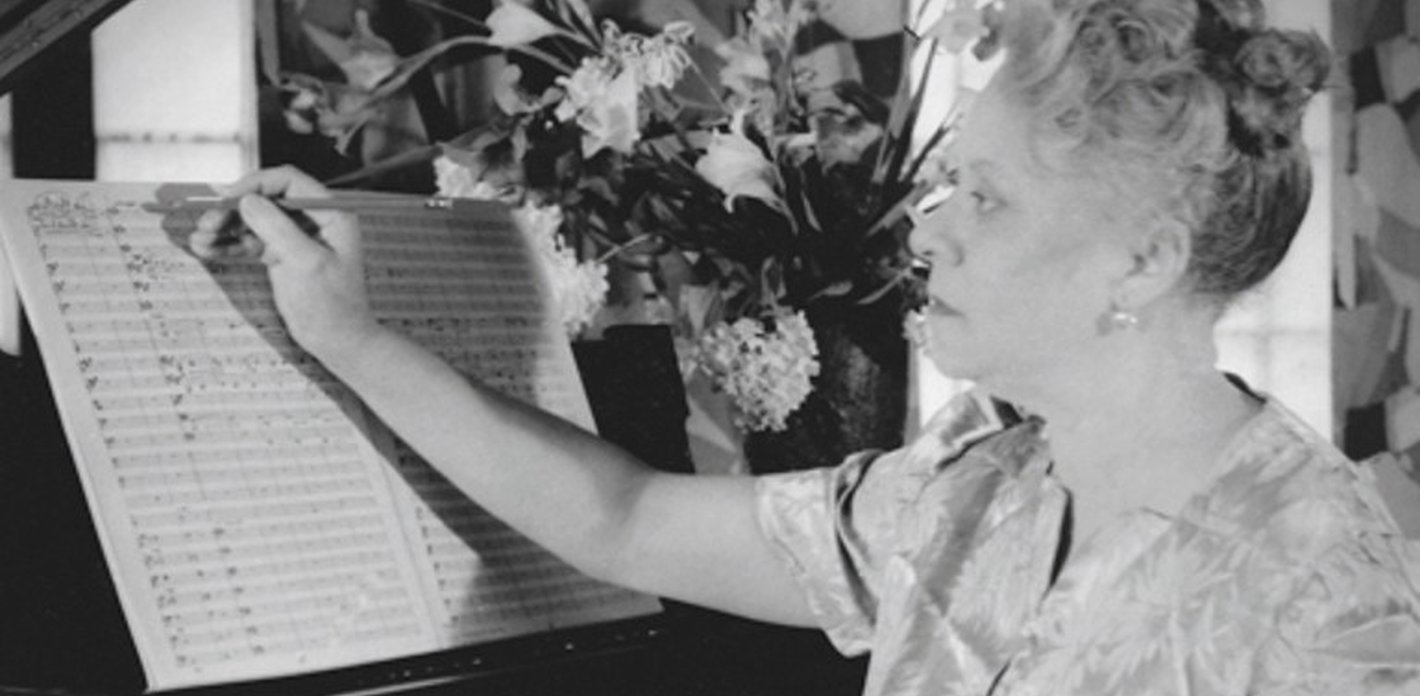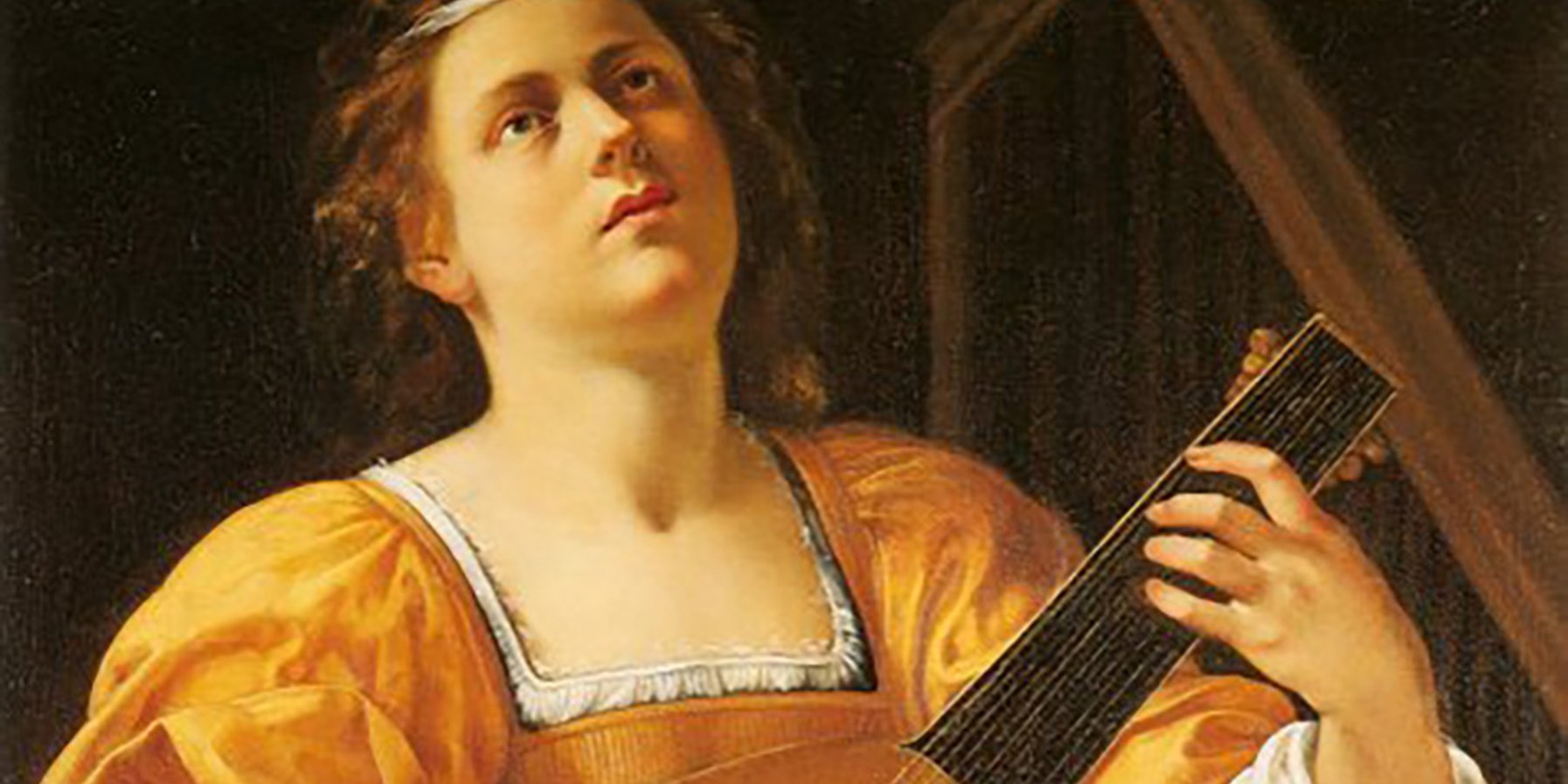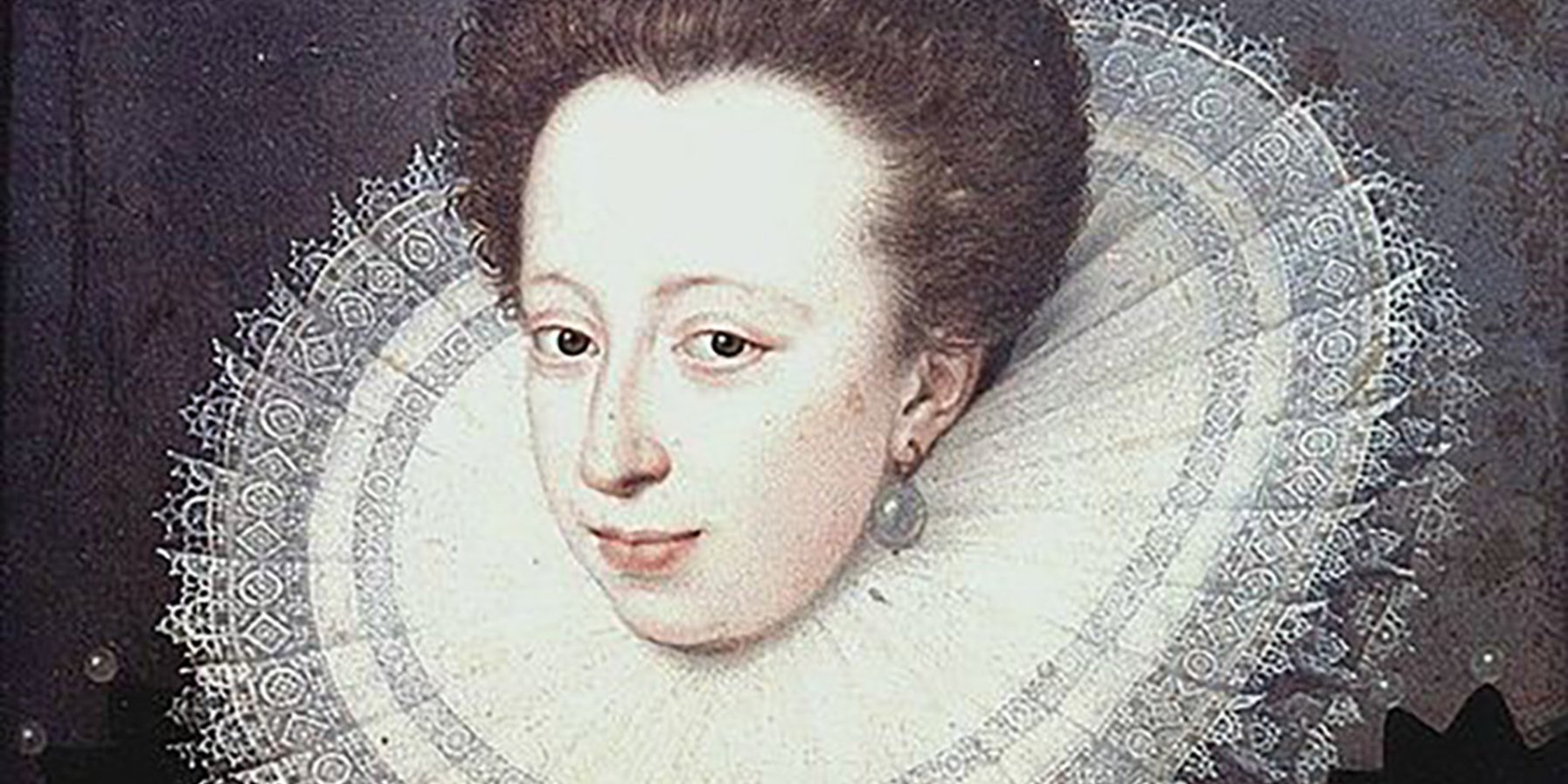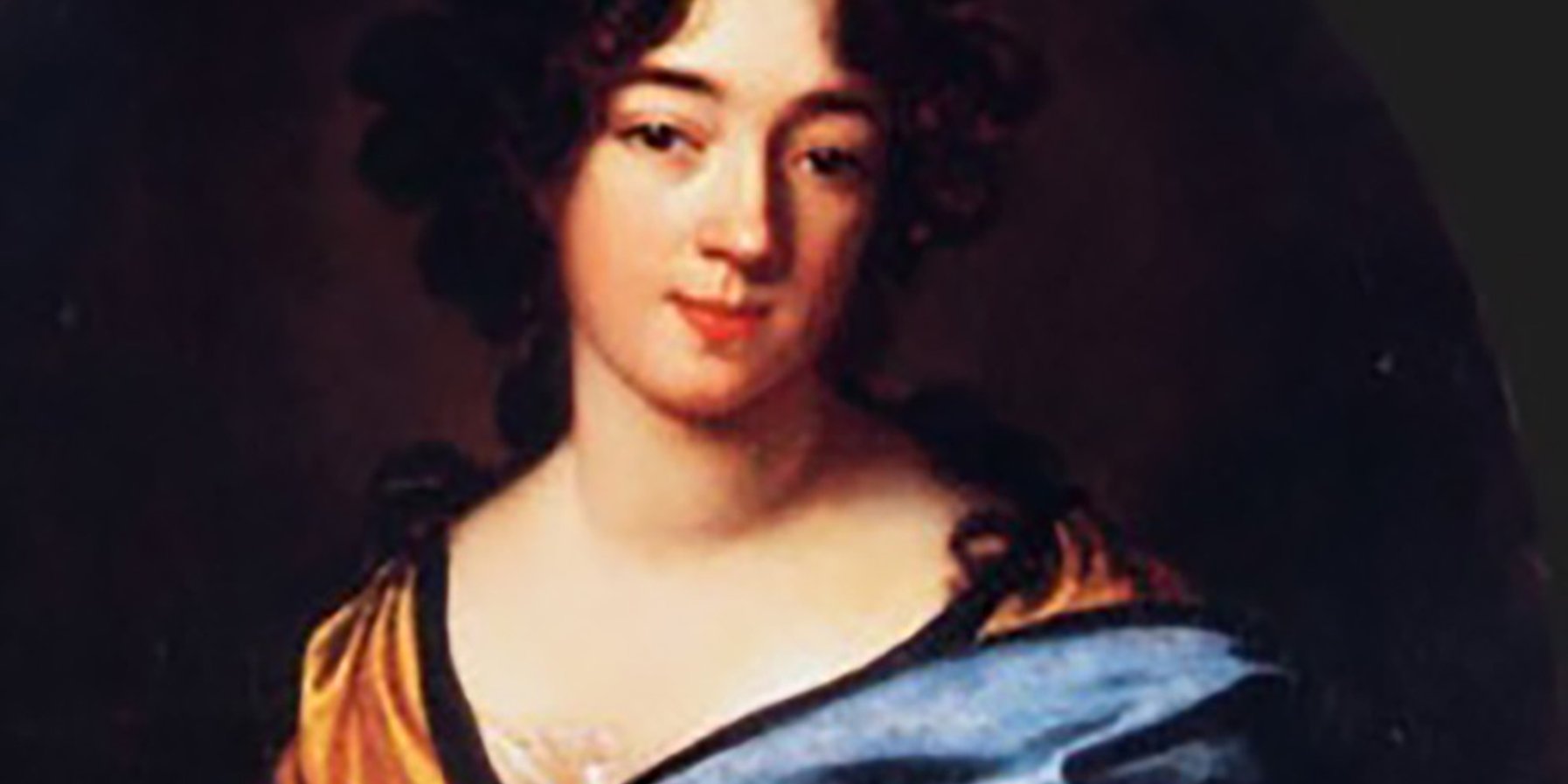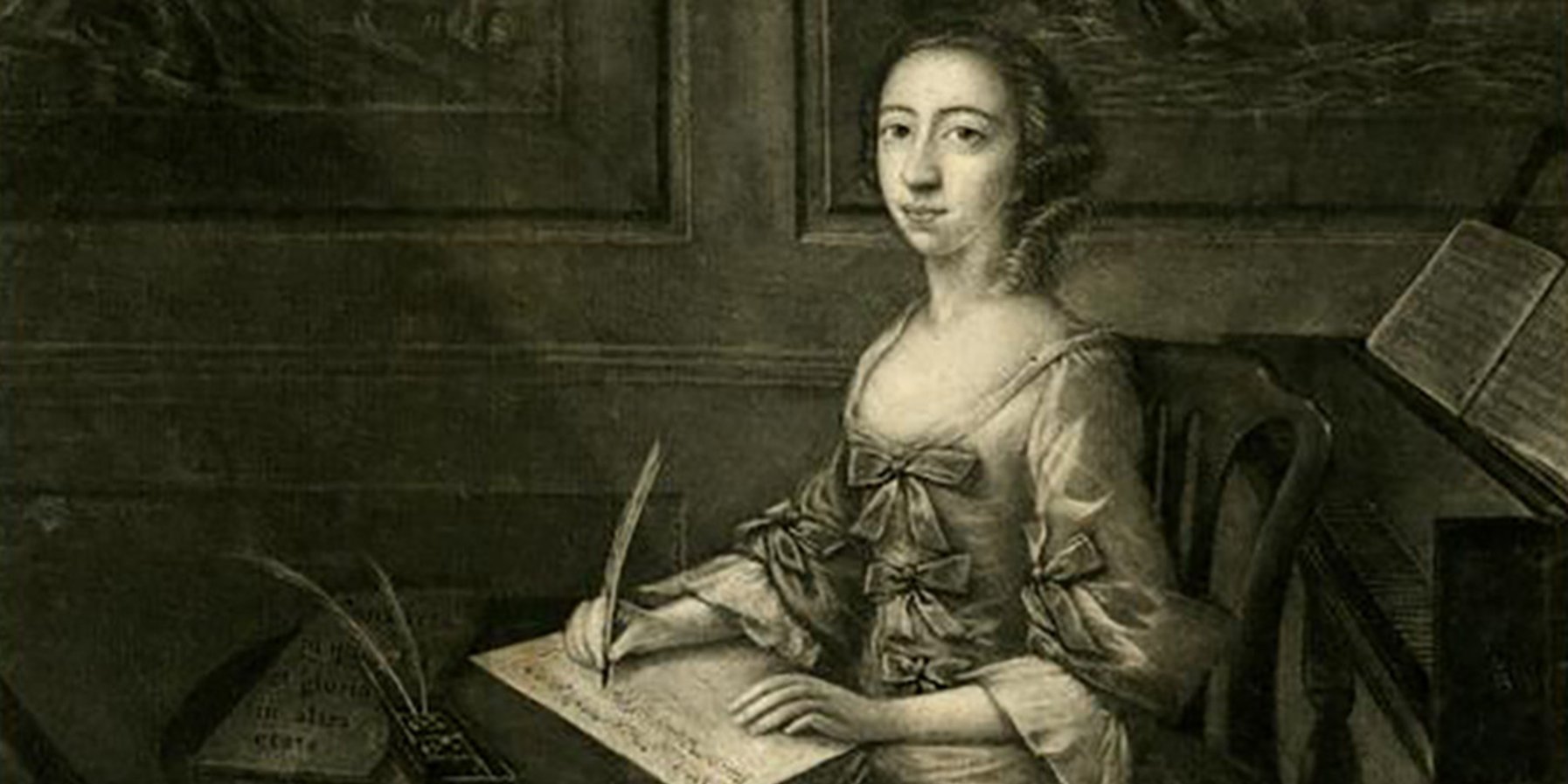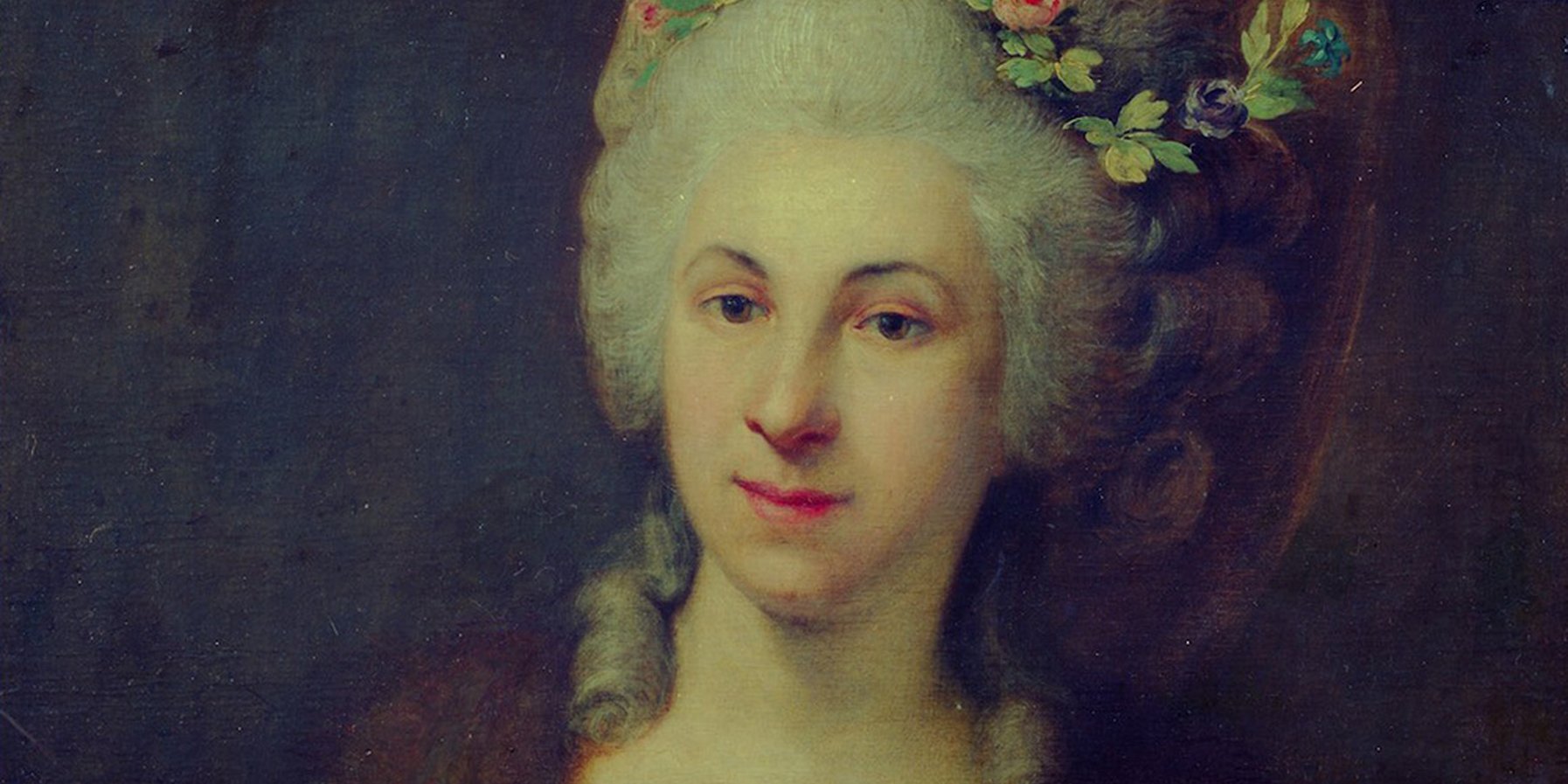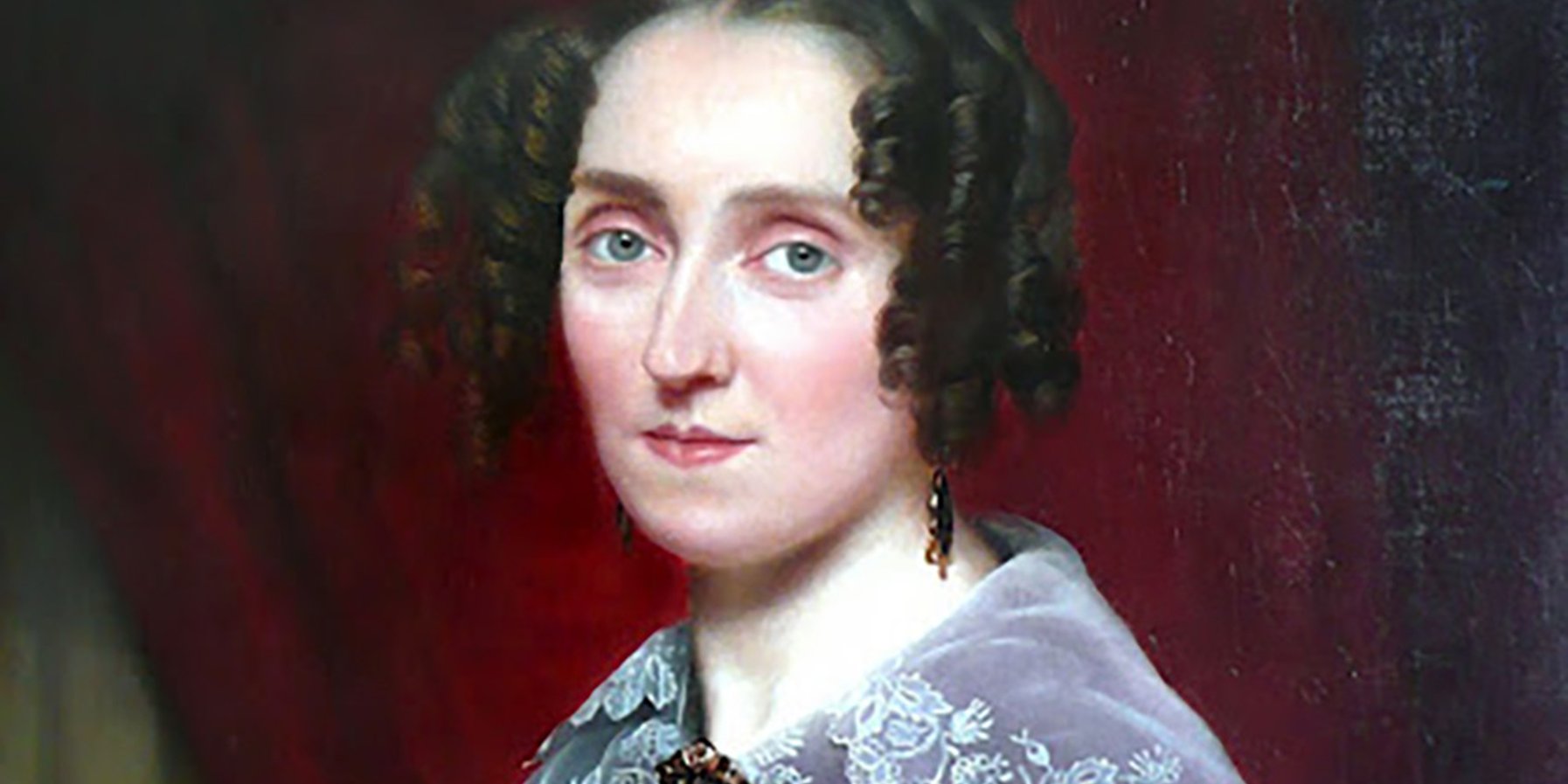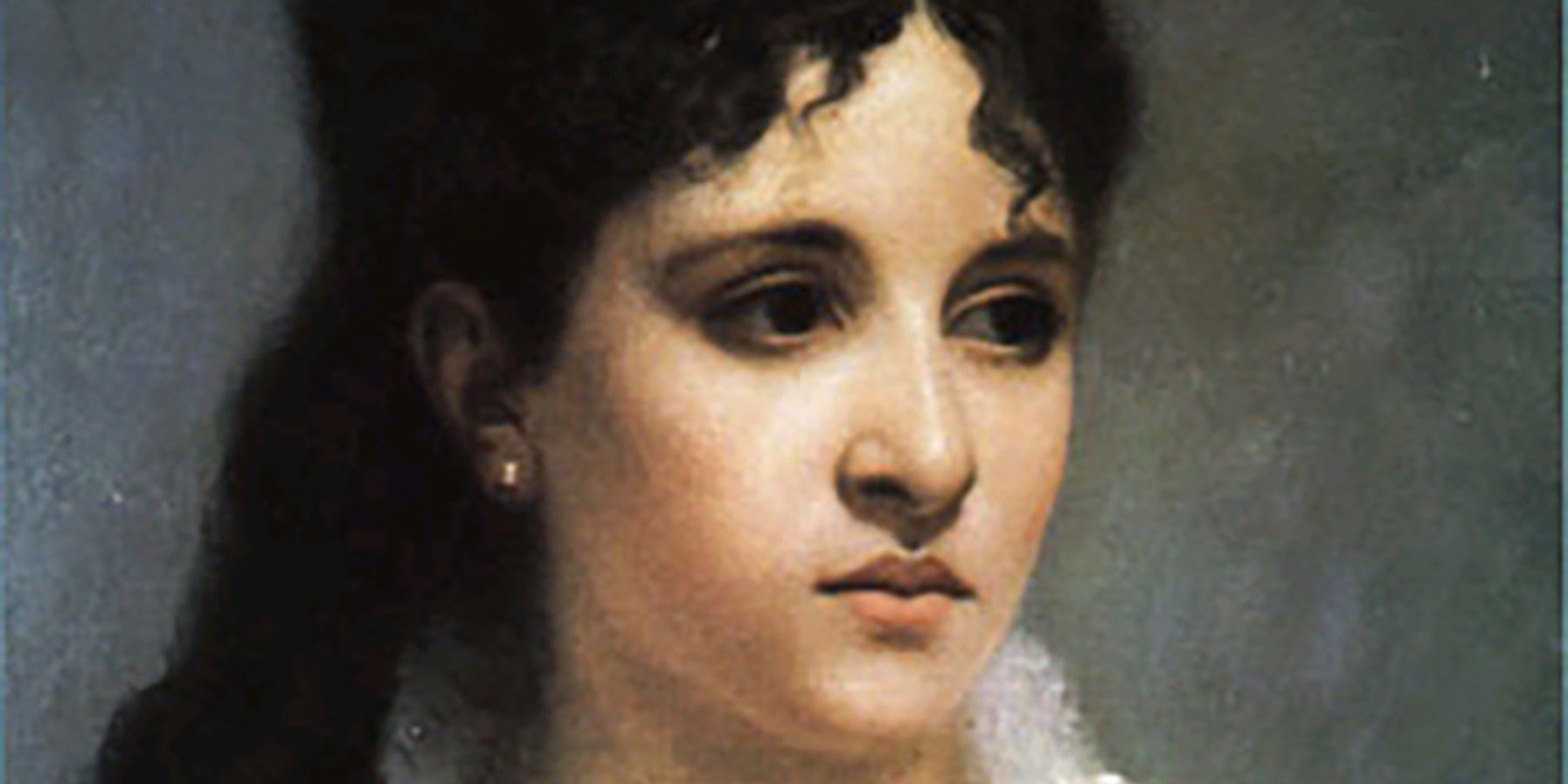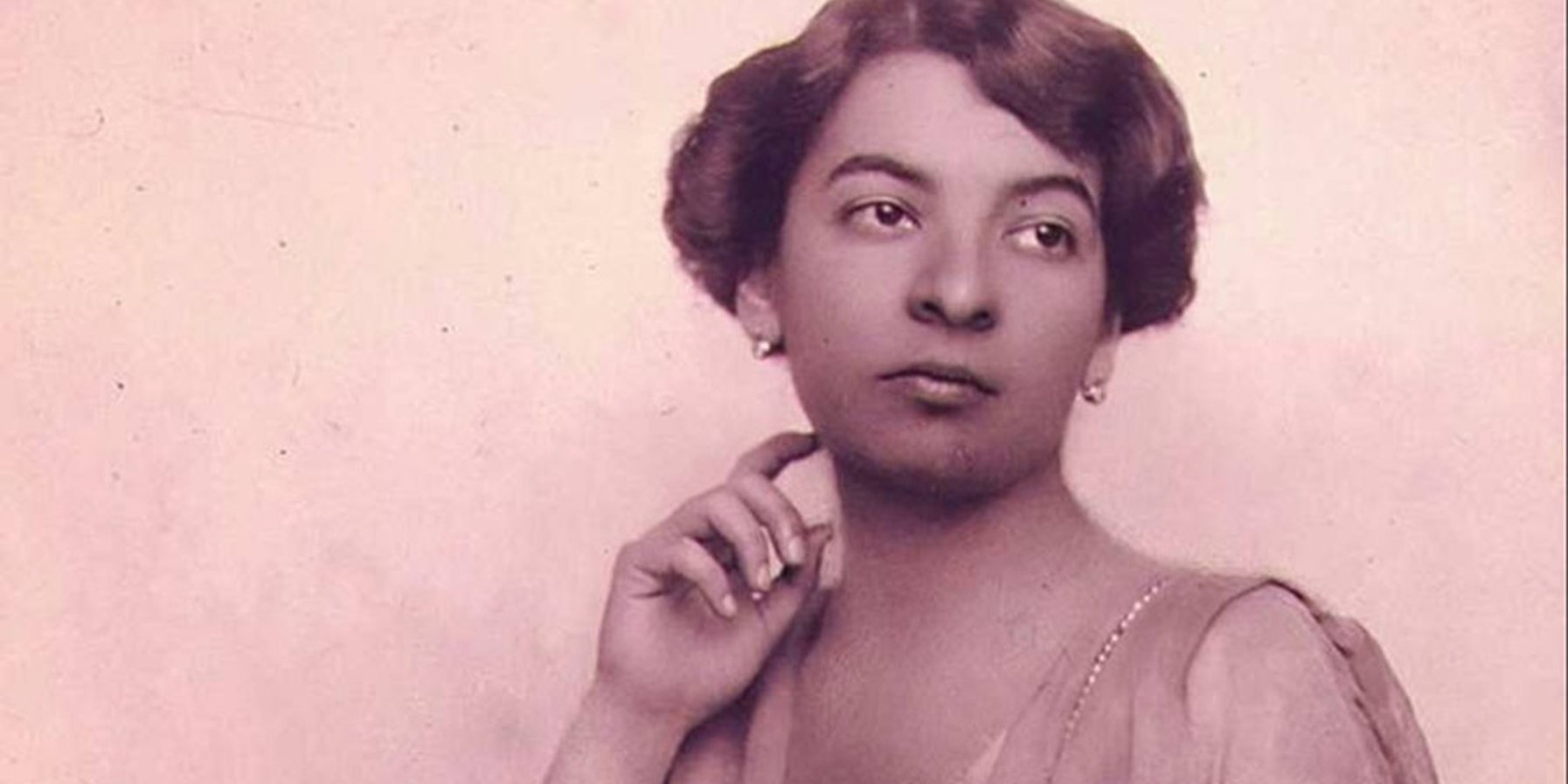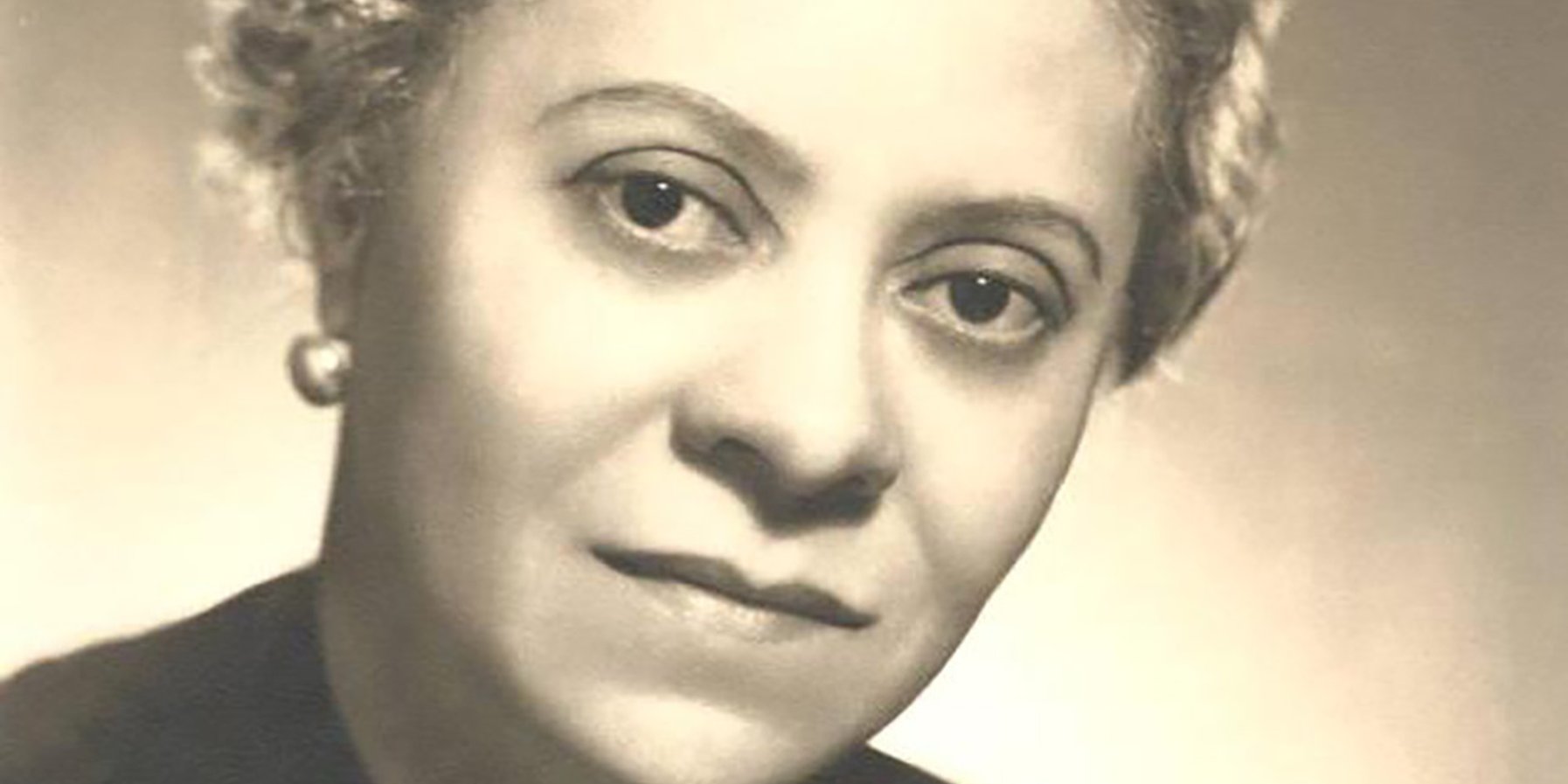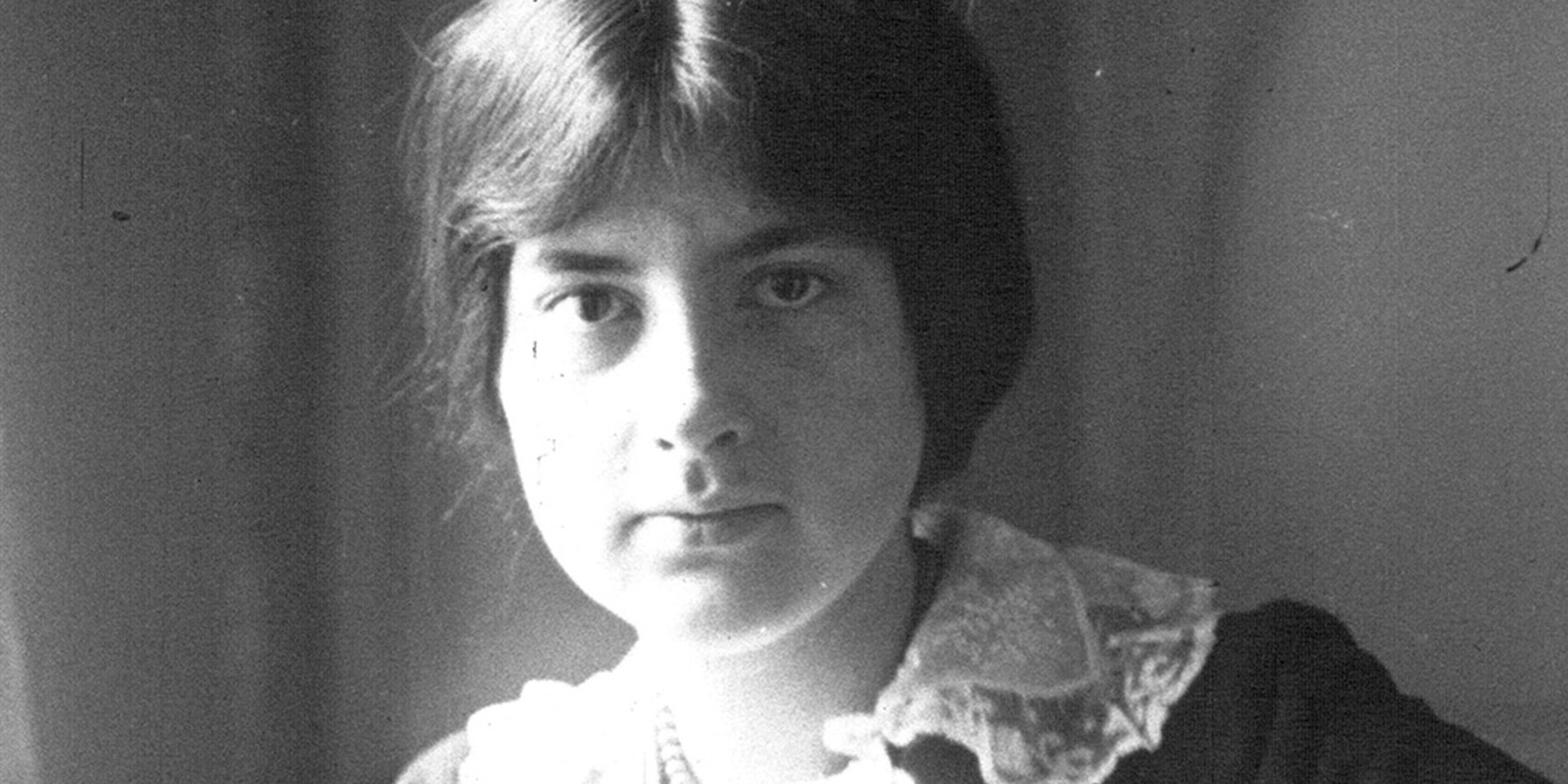»If you are a woman and you want to be a composer, you should marry money.«
Professor of a composition class in the year 2000
»I really thought that only men can become composers,« explains Lisa Streich, who was nearly 20 years old when she first read the name of a female composer on a concert programme in Berlin. In the meantime, Lisa Streich is a composer herself, and was awarded the Claussen-Simon Composition Prize by the foundation of the same name in 2021. And today there are significantly more female composers in the limelight than 50 years ago, for example. But of course there have always been women who composed music – just as long as their male colleagues. In this article we present a handful of them.
On one level :Maddalena Casulana Mezari (circa 1544 – after 1586)
Maddalena Casulana Mezari was not afraid to get involved in the musical debates of her day: the Italian composer devoted her attention to the most important genre of her day, the madrigal (a secular vocal piece, generally set in several parts). She set texts by leading poets like Francesco Petrarca, and was fond of choosing poems that one or more famous colleagues had already set to music themselves – she did not shrink from a direct comparison. As far as we know today, Maddalena Casulana was the first female composer to publish her own works. The dedications in her books of madrigals show that she fostered connections with high-ranking patrons all over northern Italy, and she was also renowned well beyond the Alps as a lutenist, singer and composer.
Maddalena Casulana Mezari, »Vaghʼ amorosi aucelli«
Top earner :Francesca Caccini (1587–1640)
She had a reputation as the best female singer of her time, and played several instruments; royal courts from Paris to Rome vied for her services, and she ended up as the most important and best-paid musician at the court in Florence (after her colleague Jacopo Peri). Moreover, Francesca Caccini may have been the very first woman to write an opera: »La liberazione di Ruggiero dallʼisola dʼAlcina« – a highly popular story that Handel later set to music as well – sparkles with melodrama, virtuoso vocal numbers and a variety of dances. Several CD recordings bear witness to the musical quality of the opera, which is still performed nearly 400 years after it was written. At least five other stage works from Caccini's pen have been lost, but a number of vocal pieces for one or more parts has survived, all of them in a style that was progressive at the time.
Francesca Caccini, »Qual temerario core« from »La liberazione ...«
»An opera of sensational beauty«
Berthold Schneider, director of the Wuppertal Opera, on »La liberazione di Ruggiero dallʼisola dʼAlcina«
At home in two worlds :Antonia Bembo (1640 – circa 1710)
In 1676 Antonia Bembo fled to Paris to escape the clutches of her violent husband; she had to leave her three children behind in Venice. In the French capital, King Louis XIV hired her as a singer for his court, for which she was rewarded with a lifelong pension and accomodation in a convent. Her employment with the king left Antonia Bembo plenty of time for composing: in the seclusion of monastic life she wrote six volumes of sacred and secular vocal music as well as an opera, making her one of the most productive female composers of her day. Moreover, she took the liberty of evolving her own individual musical style without consideration for contemporary expectations and conventions. Bembo’s works combine French and Italian influences to create a new style that had not existed before in this form.
Antonia Bembo, »Ne me fait point sentir«
Multi-Talented :Elisabetta de Gambarini (1730–1765)
Elisabetta de Gambarini was a woman of many talents. Born in England as the daughter of Italian aristocracy, she was not only a notable singer who appeared as a soloist in the first performances of Handel’s »Occasional Oratorio« and »Judas Maccabaeus«. She also played the organ, harpsichord and piano, conducted and painted. Her outstanding reputation even enabled her to put on concerts of her own – highly unusual for a woman in those days! And last but definitely not least, Elisabetta de Gambarini was also a composer: in 1748 she became the first British woman to publish a collection of harpsichord compositions. Among the subscribers to the edition were dukes and counts, barons and high-ranking military officers – and no lesser musical personalities than George Frideric Handel and his equally well-known fellow composer Francesco Geminiani.
Elisabetta de Gambarini, Sonata for Harpsichord No. 5 in C Major
On familiar terms with Haydn and Mozart :Marianna von Martines (1744–1812)
»Her music is a real discovery – strangely familiar, yet quite different from anything you have heard before.«
Melanie Unseld, musicologist
As a child, Marianna von Martines lived under one roof with Joseph Haydn, Nicola Porpora and the famous librettist Pietro Trapassi (aka Metastasio), who seems to have written about 90% of all 18th century opera libretti. The young Haydn gave piano lessons to the seven-year-old, while Metastasio fostered her musical talent to the best of his ability. Marianna von Martines made her first public appearances at the Imperial court in Vienna, where the Emperor Joseph II turned the pages of her score in person. The young musician went on to attain great renown as a singer and pianist, making a significant contribution to Viennese musical life with her salons. She rubbed shoulders with Salieri, Haydn and Mozart, who is said to have played compositions of his together with her as a duo. Von Martines composed her first work, a setting of the Mass, at the age of 16, and it was followed by works for harpsichord and orchestra as well as vocal music, including an oratorio. In 1773 she became the first woman to be admitted to the Accademia Filarmonica di Bologna.
Marianna von Martines, »Berenice, ah, che fai«
Pioneer :Louise Farrenc (1804–1875)
Any composer in 19th-century France who wanted to make a name for oneself wrote operas. But Louise Farrenc inclined towards symphonies, chamber music and piano music. Works, in other words, in the Classical and Romantic tradition, which was little known in the country at that time and was also frowned on as »German«. She was probably inspired by her composition teacher Anton Reicha, who was one of the first people to introduce this music to France. In addition to composition, Louise Farrenc studied the piano with the leading virtuosi of her day, Ignaz Moscheles and Johann Nepomuk Hummel, and for many years she pursued a successful career as a pianist.
In 1842 Louise Farrenc was appointed Professor of Piano at the Paris Conservatoire; she was the first woman anywhere in Europe to occupy such a position, and after eight years she even managed to get her salary raised to the level enjoyed by her colleague Henri Herz. Her chamber music and her three symphonies were regularly performed during her lifetime, and her Air russe varié Op. 17 for piano was given a very positive review by none other than Robert Schumann. Louise Farrenc failed to achieve real popularity with the public – perhaps because she didn’t write operas –, but she can still be regarded as a pioneer of Classical and Romantic music in France.
Louise Farrenc, Symphony No. 3 in G Minor, Op. 36
»A woman who follows with firm steps and her head held high the difficult path that few men manage to take nowadays.«
Thérèse Wartel, Revue et Gazette musicale de Paris, 31.
Lived in sin :Augusta Holmès (1847–1903)
»At one and the same time a remarkable pianist, poetess and composer.«
Gazette artistique de Nantes 15 January 1891
Men became infatuated with this beautiful blonde wherever she went: César Franck was in love with her, Saint-Saëns proposed to her more than once, and she even counted Franz Liszt among her admirers. But Augusta Holmès rejected the idea of marriage – indeed, she had no need for it: as her father’s sole heir, the Frenchwoman with Irish roots was financially independent. Instead of looking for a husband, she chose to cohabit with the poet Catulle Mendès, whom she bore five children.
Holmès played the piano and the organ, and she was also a gifted singer. Her music shares a stylistic kinship with the works of César Franck and Richard Wagner. Among her most successful compositions are the symphonic poem »Irlande« and in particular the »Ode triomphale en lʼhonneur du Centenaire de 1789«, a piece she wrote to commission for the centenary celebrations of the French Revolution that was first performed at the Paris World Fair in 1889 by a huge ensemble: an orchestra of 300 and a choir of 900.
Augusta Holmès, »Irlande«
Inner emigration :Mel Bonis (1858–1937)
Unlike many other composers of either gender, Mélanie Bonis came from a simple background. But she nonetheless managed to study music: César Franck arranged for her to enrol at the Paris Conservatoire. And when a fellow student there proposed to Mélanie, her parents forbade her to discontinue her degree, and married her off instead to the much older Albert Domange, a rich widower who brought five children into the marriage. She continued to pursue her musical interests with her former admirer, and this led to a romantic attachment which resulted in the birth of a daughter, Madeleine. Bonis's most intense creative phase began after the birth of her illegitimate daughter – probably in particular to give expression to her inner emotional conflict. Mel Bonis left an oeuvre consisting of some 300 compositions: chamber and vocal music, piano and organ pieces and 11 orchestral works, written in a Late Romantic style that leans towards Impressionism. Today, she is seen as one of the leading female composers in France at the turn of the century.
Mel Bonis, Cantique de Jean Racine
»I would never have thought that a woman could write something like this.«
Camille Saint-Saëns
»A true composer« :Ethel Smyth (1858–1944)
»I interrupted her in order to charge over to Mahler, whom I implored to come with me - the Englishwoman was playing her music for me, and she was, I believed, a true composer […] When we parted company, I found myself completely under the spell of the music I had heard and of her as a person.«
Bruno Walter
»The low esteem in which female composers in general are held has been knocked for six by a resolute Englishwoman full of cheerful energy who remains undeterred by any obstacle« – thus the magazine »Merkur« in 1911. The Englishwoman referred to in the article was Ethel Smyth, who studied under Carl Reinecke und Heinrich von Herzogenberg in Leipzig, even wrested words of praise from Brahms for one of her works, and managed to get the six operas she wrote performed at major theatres like Covent Garden in London or the New York »Met«. Her music was held in high regard by great conductors of the day such as Bruno Walter (who described her enthusiastically to Gustav Mahler as »a true composer«), Arthur Nikisch and Thomas Beecham. In terms of style, Smyth took her cue from Germany's Late Romantics – initially from Brahms and his circle, later from Wagner as well. In her old age she went deaf and turned increasingly to writing.
Ethel Smyth, Overture to »The Wreckers«
Her finger on the pulse of the times :Dora Pejačević (1885–1923)
Lush Late Romantic sounds, enriched with Impressionistic harmonies. Orchestral splendour à la Richard Strauss with a hint of Expressionism: the music of Dora Pejačević introduced modern music to Croatia. With her orchestral and chamber music, the daughter of a Croatian count and a Hungarian baroness helped connect her country’s music to current trends in the early 20th century, and also brought her international recognition. Dora Pejačević spent the last years of her life in Munich, where she died at the young age of 38.
Dora Pejačević, Symphony in F-Sharp Minor
Divorced, female, black :Florence Price (1887–1953)
She was the first Afro-American woman to have a major orchestral work performed by a major American orchestra: Florence Price. Born in Little Rock, Arkansas, Price studied piano and organ in Boston, and composition, orchestration and organ in Chicago. After getting a divorce from her violent husband, she lived with her friend and pupil Margaret Bonds. In 1932 she won first prize at the Wanamaker Foundation Awards with her Symphony in E minor, and at the same competition her Piano Sonata won third prize. The symphony was premiered by the Chicago Symphony Orchestra on 15 June 1933. In addition to a total of four symphonies, Price wrote a variety of other orchestral works as well as songs, pieces for violin, organ and piano and a number of chamber-music works. Her music combines European tradition, especially that of the Romantic era, with gospel and spiritual elements.
Florence Price, Symphony No. 1 in E Minor
Ground-breaking :Lili Boulanger (1893–1918)
It was without precedent for a woman to win the prestigious Prix de Rome awarded by the Paris Conservatoire. Lili Boulanger pulled off this coup in 1913 with her cantata »Faust et Hélène« – after she had only been studying composition for one year. Not long after that she signed a contract with the well-known music publisher Ricordi, which helped her establish a reputation and secure performances for her music even before she turned 20. Starting out with a style heavily influenced by Debussy, Lili Boulanger evolved her own individual and highly expressive musical language in her mostly vocal works, anticipating the great oratorios of Swiss-French composer Arthur Honegger. Lili Boulanger suffered from poor health from an early age, and died aged only 24 in March 1918. She dictated her last composition, a Pie Jesu, to her sister Nadia.
Lili Boulanger, Psalm 130
»Mlle. Lili Boulanger triumphed over all male rivals at this year's Rome Competition and won the Grand Prix de Rome straight off with tempo, lightness and supreme ease, leaving the other candidates in a somewhat distraught state.«
»Musica« magazine (1913)
Text: Juliane Weigel-Krämer, last updated: 1 Mar 2021
Translation: Clive Williams
